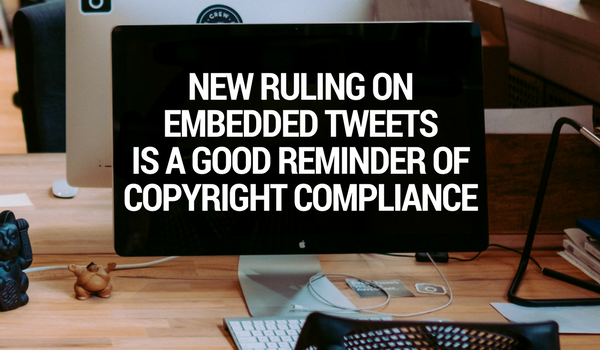
We all know—or should know—that plagiarism is bad. And in this age, it’s pretty easy to prevent outright violation of copyright: you can easily link to sources with in-line hyperlinks, Google and other software can easily show you where phrases or whole paragraphs appear throughout the web, and Internet trolls are just waiting for someone to make a mistake they can call out.
But a recent ruling could change all that. Wired reports that a judge recently ruled that those who embed tweets that contain images could be in violation of copyright. It seems like a minor infraction and something where some could claim plausible deniability. But if this ruling holds up—the current ruling can be appealed—it could change how media and other content creators across the Internet use not only tweets but potentially other forms of information and could have ramifications in terms of monetary fines for violating copyright.
An obvious way to avoid worrying about violating copyright in this case is to simply not embed a tweet that contains an image or choose to not use the image when embedding a tweet into other content. Another way to make sure buy ambien online in canada you’re not violating copyright, Wire suggests, is to simply ask the owner of the image for the rights to use the image.
When in doubt, check with a lawyer to make sure you’re not violating someone’s copyright. When information is at our fingertips, it’s often hard to remember that someone created the content we’re consuming and that they deserve to be given the credit for creating that content.
This new ruling is a good wake up call to content creators to make sure they abide by proper copyright standards for all types of media, not just embedded tweets, and aren’t infringing on others’ rights. It could also lead to more collaboration around the Internet, with creators reaching out to other creators to share and display work.
Now would be a good time to develop or update a copyright compliance document, or maybe add a section in your brand guidelines about using work from outside your organization in various types of content. It will help make sure all content creators and marketers are on the same page regarding how to handle sources and images, as well as holding your team accountable in the long run.
